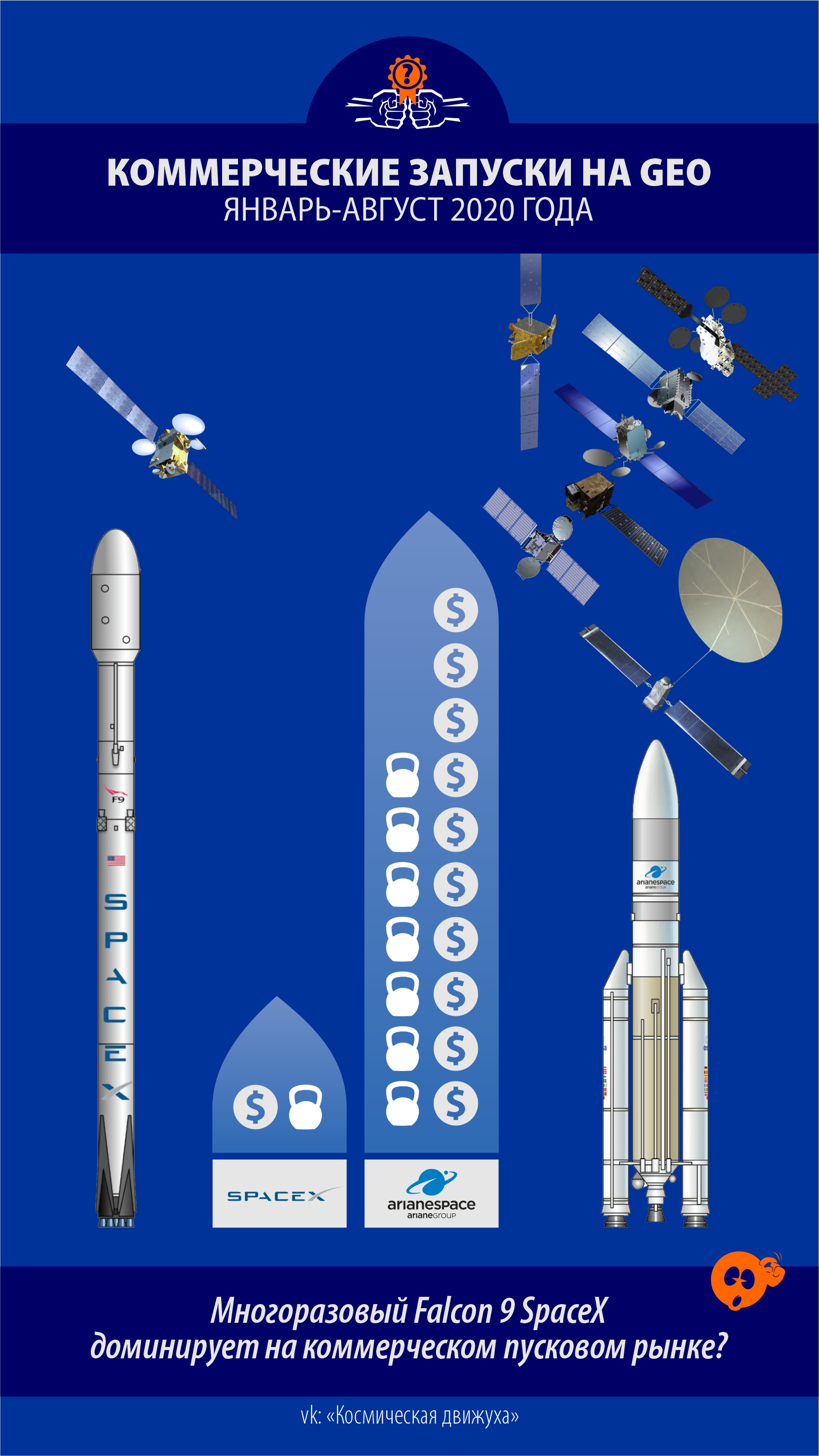Textik-By-Chance. The tit boasted to burn the sea. (C)
Some graphics and text.

Does SpaceX's Falcon 9 Really Dominate the Commercial Launch Market?
One of the ideologems of "new space" is "Falcon 9 Mask has pushed everyone out of the market for commercial launches." Two questions:
- Is it so?
- Is the damage real for other countries and global launch companies?
Is it so? No!
The current launch company does not confirm SpaceX's "dominance" in the heavy commercial launch market. For 8 months of 2020, Arian 5 launched 7 (!) Geostationary satellites, SpaceX - only one. The ratio is 1: 7, and for money it is 1:10.
What are these satellites? These are typically heavy, expensive and durable satellites for geostationary orbit. Typical values are 3.5 tons of weight, 10 kW of electrical power, costing $ 250 million and an active operation time of more than 15 years. These satellites provide nearly a third of the Earth's "space budget" ($ 100 billion in services).
This confirms the RAND forecast for the commercial heavy satellites market: 20 units per year (for all). The share of Americans by the 25th year will be reduced to 4-7 units due to the introduction of new European and Russian missiles.
Is the damage real for other countries and companies? Yes, but this is not critical.
Of course, there is commercial damage from the appearance of SpaceX for traditional launch companies (Arianspace and Roskosmos). But it is not critical, i.e. will not lead to the cancellation of commercial launches by European and Russian missiles, the closure of enterprises and spaceports. China and India did not enter this market due to various reasons, but they can "take" their share in the future.
The situation can be described as "unpleasant, but not fatal." Both for Europe and for all other launch companies of the Russians, Chinese and Indians, as well as numerous American ones, the main source of income was, is and will be the launches of national payloads, both military and civilian. Serious problems with the launch market will arise within the United States, due to the overproduction of new missiles. The market for US military and government launches averages 12 units at all. Plus about five will come from abroad. Will provide a little support for the deployment of massive satellite constellations, but this will quickly end. The show promises to be exciting.
→ RAND launch market assessment .
→ Google translation into Russian.
Infographics for this year's commercial heavy satellite launches.



